We took a visit to Attenborough Nature Reserve in Nottingham in search of an amazing starling murmuration. I had seen a brilliant photo on twitter, and a couple of replies later I found out that they had been seen at 4.30pm over Clifton Pond reedbed with a larger group over Corbett’s Meadow heading into Work’s Pond. After an hours drive there we decided to position ourselves at the top of Corbett’s hide hoping this would give us a perfect 360 degree view of the murmuration. I always feel real anticipation waiting for them to arrive. A rush of adrenaline surges through me when I see the first small groups arriving. A few groups appeared but instead of forming over the pond, they started to head towards the meadow. More and more groups followed and I started to feel that our gamble had not paid off; we were standing in the wrong spot. The path towards the meadow was extremely muddy; typical I had chosen not to wear my wellies that day! But we made the snap decision to change location. As we squelched through pathways of thick, deep mud I was sure we were not going to make it. The sun was setting fast. We are usually very lucky when it comes to seeing starling murmurations, but this evening was just not working in our favour. The starlings had formed a huge murmuration, a couple of sparrowhawks were even thrown into the mix, but unfortunately it was just too far away to see with the naked eye. I was, of course, a little disappointed, but the sheer noise of chatter we were greeted with when we did reach the path took my attention away from the murmuration. I have never seen a rookery quite like it in my life. The trees were black, full of corvids. Rookeries are full of activity at this time of year as rooks usually breed from February. Whilst enjoying the hive of activity in the trees, without warning, the corvids suddenly exploded from the treetops! I have no idea what could have spooked them. There was no indication of any loud sound or sudden movement. What an earth could have caused this spectacular display is still a mystery to me. I may not have been fortunate enough to see the starling murmuration that day, but nature is full of surprises and instead I was able to witness a brand new British wildlife spectacle.
Category: Birds
‘Twite’ a day!
The twite is a bird on our 2018 list, so when a flock of about 40 was reported in Knott End -on-Sea in Lancashire we made the 2 hour journey in hope of seeing them. Many people say to us ‘Two hours! To see a bird!’ But the way we see it is that 2 hours can easily be frittered away at home; watching a movie or completing mundane tasks such as laundry or food shopping. I think it is so easy to put obstacles in the way of what we love to do the most. Perhaps it’s guilt. Perhaps it’s worry about what others will think if we don’t do what society thinks we should do. Or it could be a case of just being ‘stuck in a rut.’ But we came to the conclusion that when we reach the ripe old age of 87, we want to share stories with our grandchildren of the time we braved the northerly winds in hope of catching a glimpse of a bird we had never seen before, or taking a trip to our favourite nature reserve to hand feed a robin or clambering over rocks on a beach in search of starfish. I will not be looking back, and I certainly won’t be remembering, how glad I was that I stayed home on that sunny Saturday to untangle the wires behind my tv set!
Of course travelling for 2 hours can be a gamble. Wildlife is never a guarantee. But we were very fortunate. As we pulled up by the pier at Knotts End the entire flock of 40 were sitting on the wall. As we approached they seemed unconcerned by our presence. When you see wildlife, especially for the first time, you forget about the bitterly cold winds turning your fingers numb. Your mind is focused on the here and now. I have to say, I certainly fell in love with these mischievous looking birds. Easily confused with a linnet but can be told apart by the yellow beak. The twite were quite happy to stay on the pier making short trips onto the beach and back again. Something was certainly keeping them in that area. Had someone perhaps thrown out food to entice them? We weren’t sure, but I was certainly glad to have the twite as one of the first birds on my 2018 list.
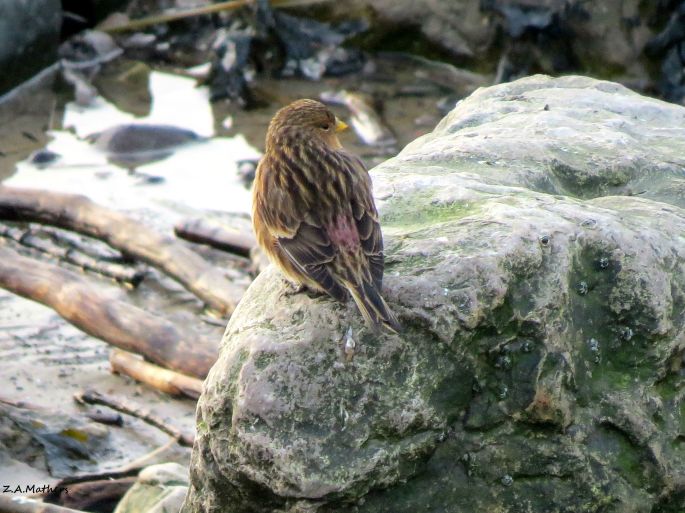

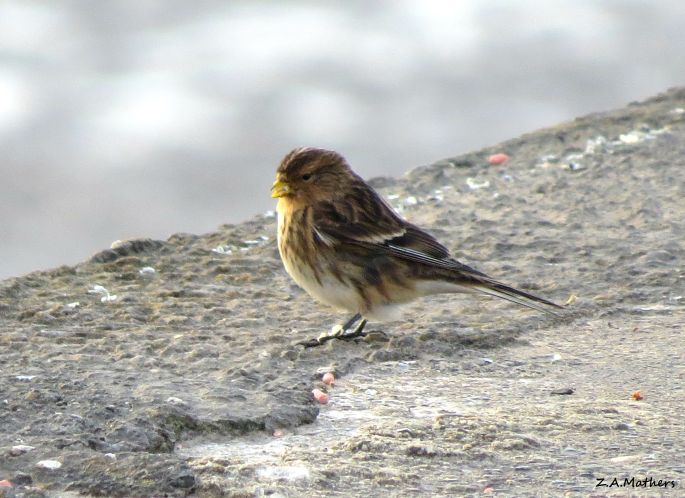

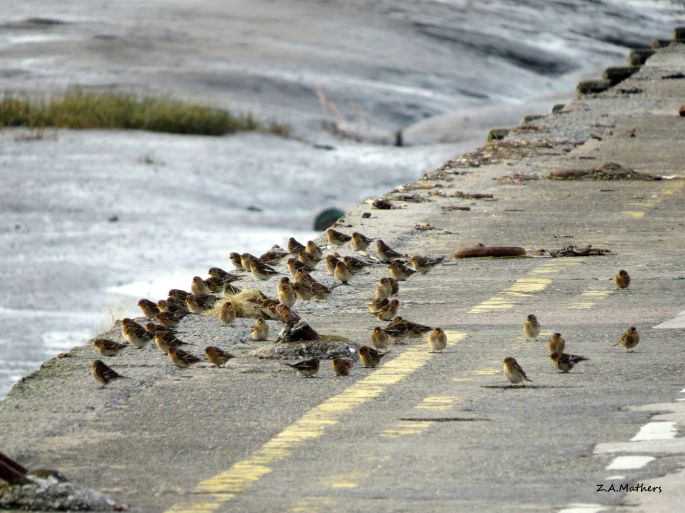
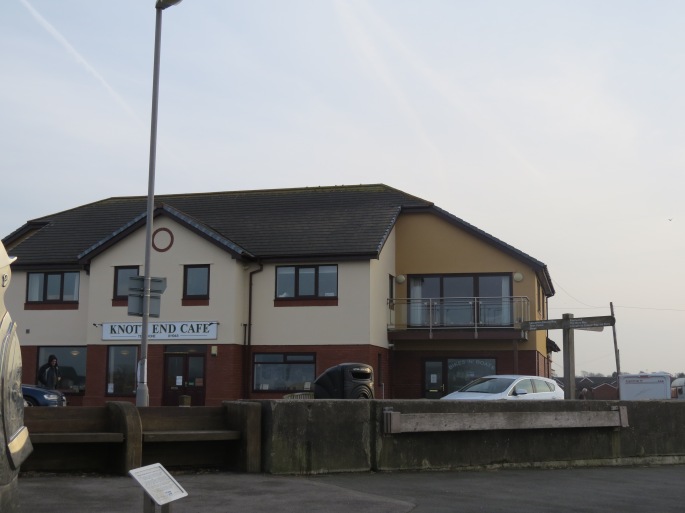
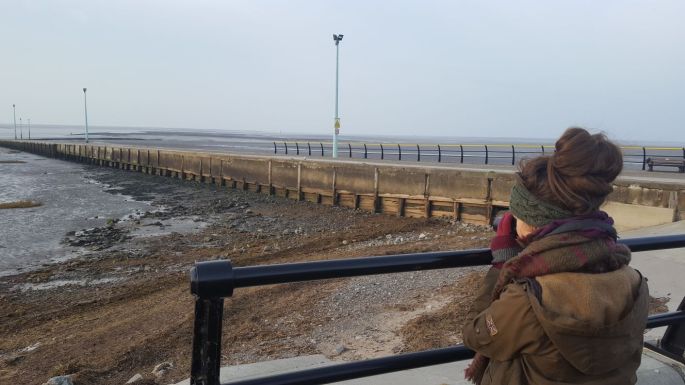
Kingsley’s Hawfinches
2017 was certainly the year of the waxwings. This year the hawfinch has taken its place.
We decided to get the wildlife year of 2018 off to a good start by taking a trip to St.Werburgh’s church in Kingsley in hope of seeing a small flock there.
We braved the bitterly cold winds and were rewarded with good sightings of these shy finches.

A few hours later we took a trip to Sandbach flashes. Glaucous gulls can be seen along the coasts in winter but there are also sightings on pools of water and reservoirs inland. The glaucous gull has eluded us in the past but luck was on our side today. Although hunched down, still an incredible bird to see.
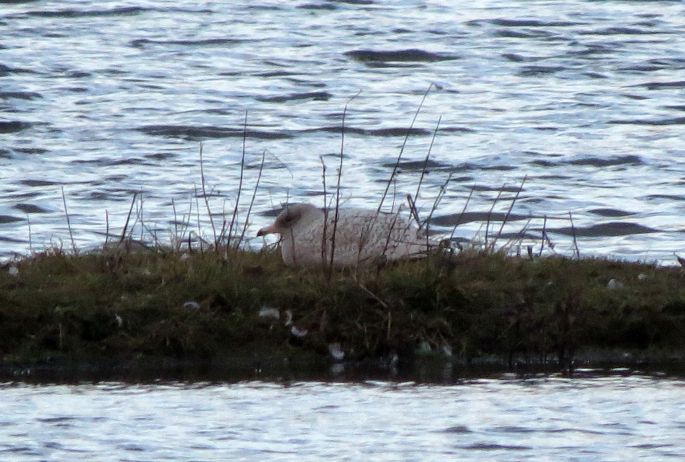
A great start to 2018.
Nature in a Frantic World
In such a frantic world in which we live today it is easy to become overwhelmed with modern day stresses. I have fallen victim many times to the demands of everyday life. Whenever I feel the need to escape I turn to nature.
The Wolseley Centre in Stafford has always offered me so much comfort in the past and still does now. One dreary Sunday afternoon, we made our way there in hope of connecting again with what is important in life.
It may sound cheesy, but I often feel that nature knows when I am in need of a helping hand.
The Wolseley centre is where I encountered my first kingfisher. I have shared these special encounters with the people closest to me; my mum, dad, sister and now my husband. Because of this, the kingfisher brings back so many happy memories.On this particular Sunday afternoon, walking around the bend to the river, it was if the kingfisher knew that I needed his presence that day. He was sitting on a branch in the open, clearly visible without binoculars. Just this simple encounter lifted my spirits. He then dived into the river before flying off into the distance. We continued our walk around the reserve, but he seemed to make an appearance at every turn, just letting us know he was still there.
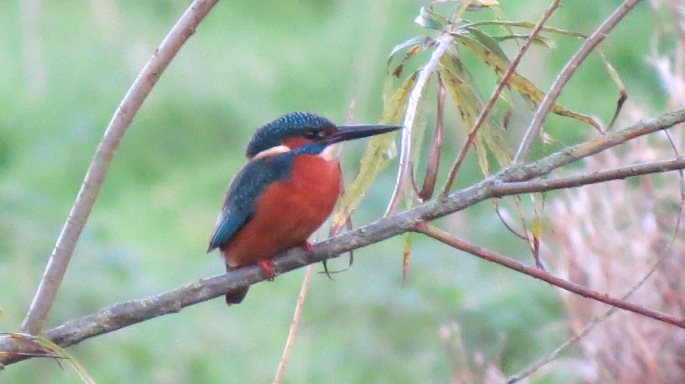
Pink-footed geese
Each season in the UK brings something new. As the nights are drawing in and the days are becoming colder I do feel a bit of sadness wash over me. I absolutely love spring and summer; chasing butterflies through meadows, checking underneath rocks for slow worms and other reptiles and watching swallows swirling over fields. But during the Autumn months all of that is replaced by something as equally spectacular, the arrival of thousands of geese.
We visited RSPB Marshside in Southport on a very calm, chilly, typical Autumn day. Marshside is home to many waders and wetland birds. I spotted my first cattle egret, slightly smaller than a little egret with a yellow beak unlike the black beak of the little egret. Plenty of geese, grebes and ducks accumulate on the lake, but the highlight for me was the flock of geese, mainly pink-footed, which formed a mesmerising flock over the lake at sunset.
These geese leave their breeding grounds in Iceland and Greenland to spend the winter in the UK providing amazing wildlife spectacles such as this one…

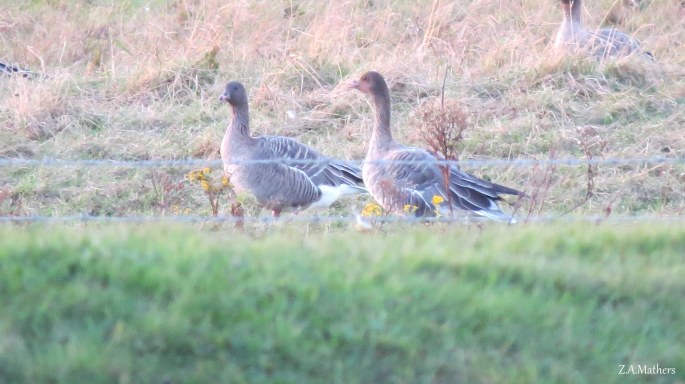
Cattle Egrets are often found, well, around cattle…

Leighton Moss
At times wildlife watching may require early starts, very early starts, but it is worth it. Of course when your alarm is blaring out at 3 o’clock in the morning on your day off it does not always seem that way.
Leighton Moss holds so many special memories for me and it never fails to impress. Almost a two hour journey away we arrived before dawn. What you have to keep in mind during these bleary eyed moments, on a dark Autumnal morning when staying snuggled under the duvet is so much more inviting, is that hearing a stag groan in the misty fields and a tawny owl hoot in the trees beyond really does not compare to anything else.
At 7am, we had Lower Hide at Leighton Moss all to ourselves. Now, don’t get me wrong, I am as guilty as anyone else at being a bit too ‘shutter happy’ when it comes to photographing wildlife, but when you see a species for the first time, at the break of dawn and the sound of several cameras clicking at the same time is absent, it really is an absolutely enchanting feeling. It is just you, wildlife and silence.
That morning I saw my first water rail, a bird that alerted me to its presence by its unmistakable call similar to that of a squealing pig. We had comical viewings of a jack snipe, bobbing up and down like he was part of some fitness class. A grey heron was spotted fishing for his breakfast and we had very distant views of an otter too.
Water Rail

Video footage of Heron with a fish
Jack Snipe
Black-necked grebe and Scaup
Westport Lake is a place I have visited for many, many years. Only a 5 minute drive from where I live in Staffordshire it offers a large lake with surrounding woodlands. It is home to mallard ducks, grebes, coots, moorhens and mute swans, but from time to time a rarer species is sometimes reported. On occasions like this a trip after work is of course necessary.
On 6th of September we went in search of a black-necked grebe seen on the lake. A tricky character to see and photograph due to its frequent diving behaviour. A few weeks later on 12th October we went in search of a scaup, another tricky character as it had its head in its wing.
Black-necked Grebe
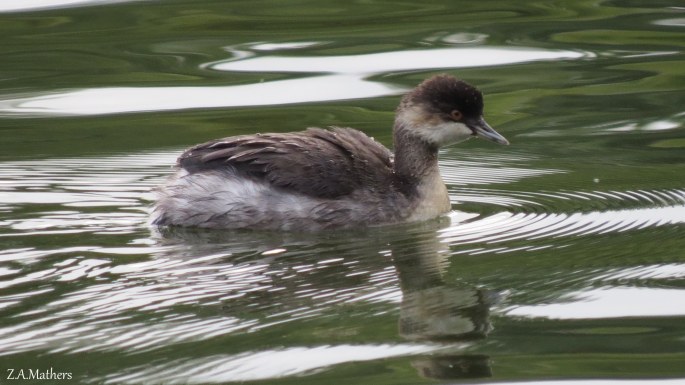


Scaup
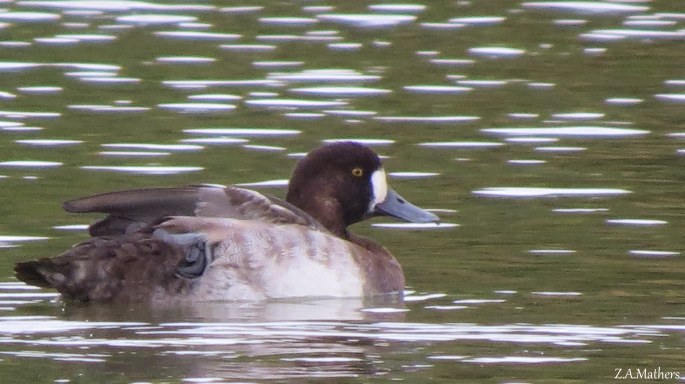
Red-backed Shrike
My first visit to The Spurn on the east coast was certainly not disappointing. A great place to visit during Autumn due to birds flying in on migration. It is no lie when I say the only people seen, not only on the nature reserves but walking through the streets too, were twitchers and birdwatchers.
The highlight for me that weekend was the juvenile red-backed shrike. A first for me and a totally endearing character.
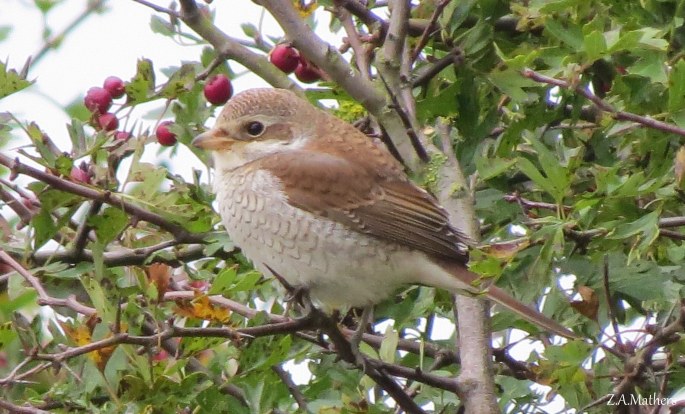

Puffins on Skellig Michael
I love the adventures that go hand in hand with wildlife watching. This is something that can never be achieved by viewing animals in a zoo. The story that accompanies my first viewing of the puffin is one of the most memorable ones for me and is proof that wildlife watching is not always easy.
Trip booked, our excitement quickly dissolved after a phone conversation with our tour guide the evening before. ‘Remember to wrap up warm and wear appropriate clothing and I must warn you, there have been fatalities on the island.’ Not surprisingly I didn’t have the best nights sleep.
As usual on trips like this there was more than one tour operator taking visitors to the island. Amongst the more ‘sturdier’ looking boats bobbed a small fishing boat. Of course that was the boat that would be taking us on an hour journey across the Atlantic Ocean.
The excitement of the group on the boat was short lived. As the swells grew bigger on the ocean, the sea sickness kicked in and I thought about the travel sickness tablets that were sitting back at our campervan. If only I had taken two before the journey. I was advised by the tour operator to focus on something stationery; that always helps. Unfortunately at this point we were in the middle of the Atlantic Ocean surrounded only by swirling water.
After an hour we finally reached our destination. I didn’t breathe a sigh of relief however; after all, we had to make the same journey back. But the adventure did not stop there. I have been on trips both home and abroad but this island was certainly not for the faint of heart. With all my focus on the steep, uneven steps leading up to the top of the island it was difficult to concentrate on anything else. I saw one man precariously making his way back down the steps on his bum!
However, the island itself was stunning, a kind of miniature version of Machu Picchu in my opinion. But what made it for me was the puffins and as treacherous as the experience felt, the puffins were worth every minute of it and I was so glad that Skellig Michael was the place where I saw my first puffin.
Skellig Michael stands aloof in the Atlantic Ocean southwest of Valencia Island, County Kerry. Skellig Michael was the destination for a small group of ascetic monks who withdrew from civilisation to this remote Island from the sixth century.
Skellig Michael is also one of Ireland’s most important sites for breeding seabirds both in terms of size of colonies and diversity of species. Each year from April puffins arrive and join many other seabirds including shearwaters, petrels, fulmars and kittiwakes on the island where they compete for nesting sites. The puffins leave the island in August so we were extremely lucky to see them.
I was surprised and pleased at how approachable the puffins were. With their comical antics it is hard to believe the struggles they overcome in their lifetime. For me they were the stars of the show that day.
Skellig Michael is also famous for it was where various scenes were filmed for ‘Star Wars, The Force Awakens.’ This caused plenty of controversy with claims that the filming had affected the breeding colonies of birds at a time when public, which surely includes actors and film-makers, were not allowed on the island. As someone who has a passion for wildlife I believe its ornithological importance which makes it a Statutory Nature Reserve, a Special Protection Area and proposed Natural Heritage Area should override everything else. But I found it quite sad to see the amount of Star Wars related merchandise on sale in the shops in Portmagee. I just hope that this has not overshadowed the real history and importance of this amazing Island.
The Steep Cliffs of Skellig Michael.
Puffins on Skellig Michael
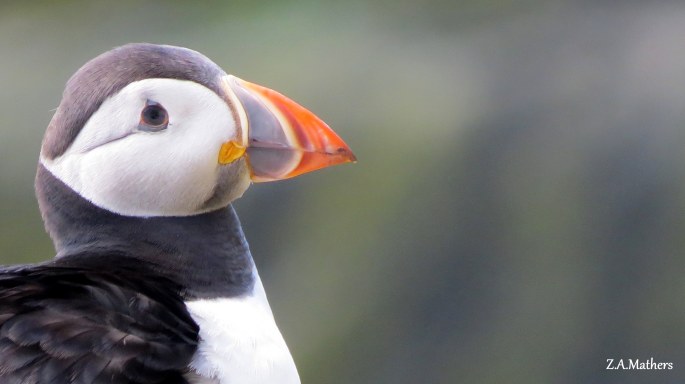
My Husband photographing a puffin showing how approachable these birds can be
Fulmars and Kittiwakes
Video Footage of the Puffins. Listen out for the strange noise they make.
Turtle Dove
Name: Turtle Dove
Place: RSPB Otmoor
Date: 4th June 2017
Time: 3.00pm
Weather: Cloudy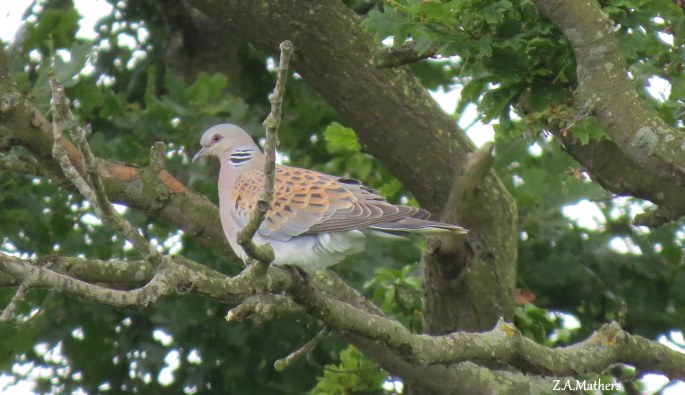
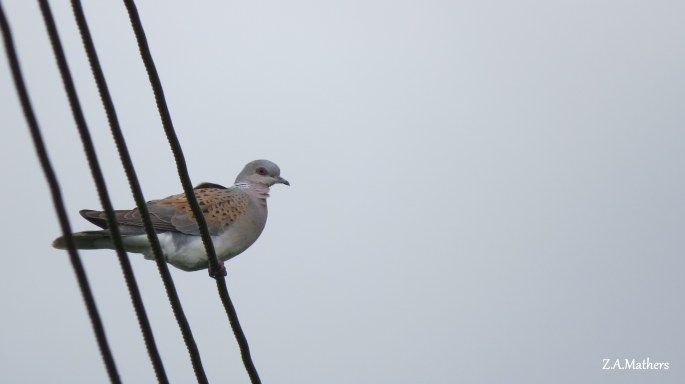

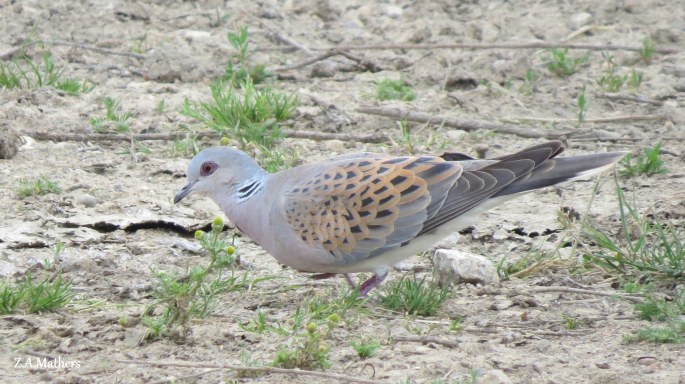
Wow! How lucky are we to finally see a turtle dove. It is a bird we have wanted to see for a very long time and a visit to RSPB Otmoor gave us some very lovely views. Turtle dove numbers are rapidly declining so this was a real privilege.
















